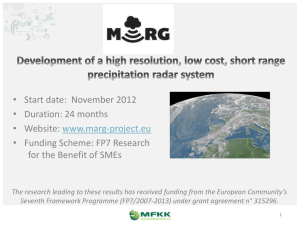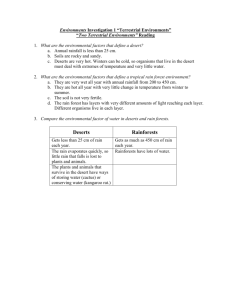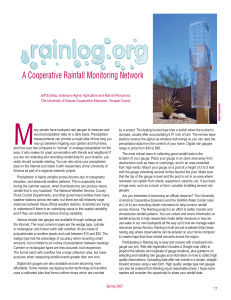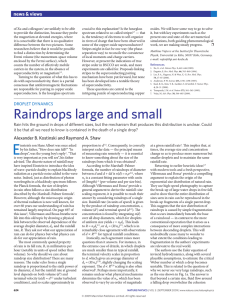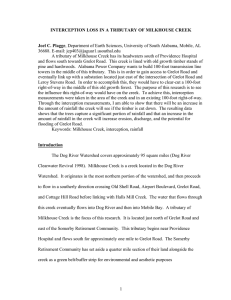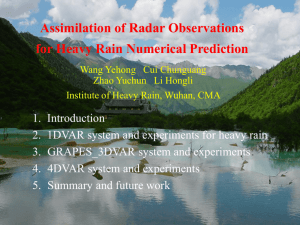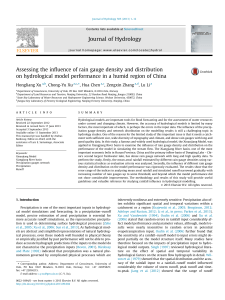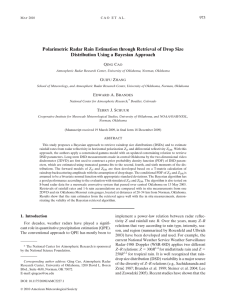Chapter 17 Moisture, Clouds, and Precipitation Review Question
advertisement
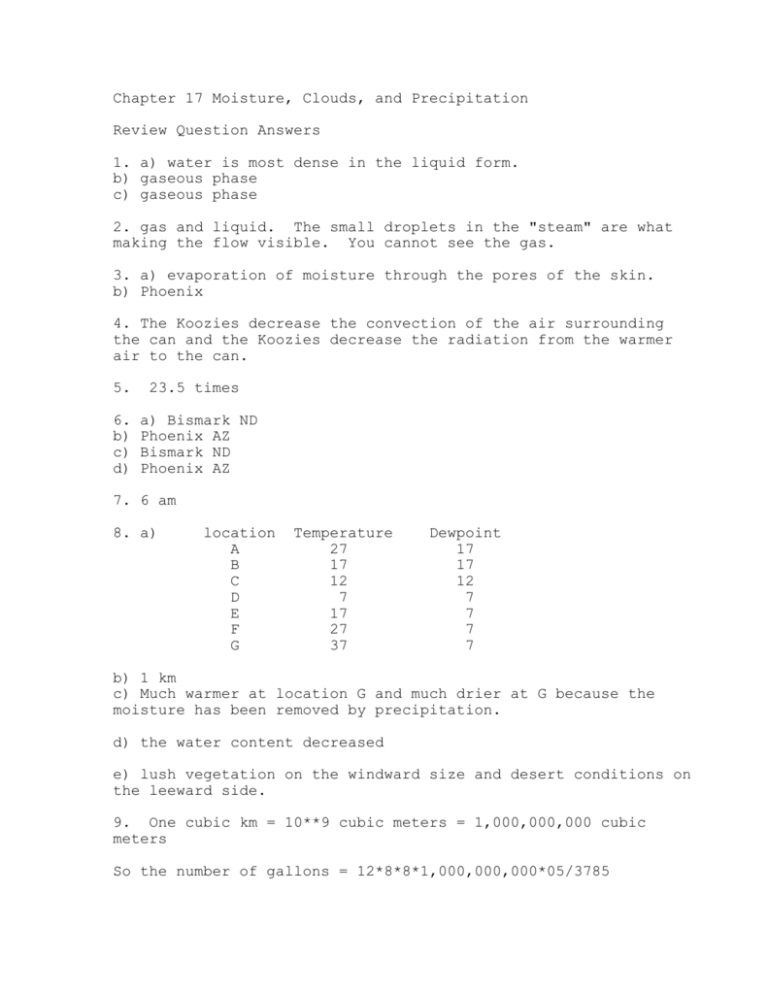
Chapter 17 Moisture, Clouds, and Precipitation Review Question Answers 1. a) water is most dense in the liquid form. b) gaseous phase c) gaseous phase 2. gas and liquid. The small droplets in the "steam" are what making the flow visible. You cannot see the gas. 3. a) evaporation of moisture through the pores of the skin. b) Phoenix 4. The Koozies decrease the convection of the air surrounding the can and the Koozies decrease the radiation from the warmer air to the can. 5. 23.5 times 6. b) c) d) a) Bismark ND Phoenix AZ Bismark ND Phoenix AZ 7. 6 am 8. a) location A B C D E F G Temperature 27 17 12 7 17 27 37 Dewpoint 17 17 12 7 7 7 7 b) 1 km c) Much warmer at location G and much drier at G because the moisture has been removed by precipitation. d) the water content decreased e) lush vegetation on the windward size and desert conditions on the leeward side. 9. One cubic km = 10**9 cubic meters = 1,000,000,000 cubic meters So the number of gallons = 12*8*8*1,000,000,000*05/3785 10. Small droplets in a cloud at about 005 mm in size coalesce (bump into each other) into larger droplets. 11. Because the ground can radiate to space efficiently if there are no clouds in the way to stop the radition. The cloud acts like a blanket. 12. North Dakota, Minnesota, and Wisconsin 13. 1.3 inches per hour times 2.5 hours = 3.25 inches 14. Rain gauges have to be read and emptied. Wind can also cause the rain gauge to not accurately pickup rain which is falling at an angle. If the rain gauges are tipping bucket rain gauges, they do not measure high rainfall rates accurately because they are loosing water during the tipping process. Radar will underestimate the rainfall rate often because you must assume certain climatic conditions because certain climates will produce rain droplets of different sizes. This affects the relationship between the radar reflectivity and the number of droplets predicted. This relationship is knows as the Z-R relationship (radar reflectivity versus rainfall rate). Differeent climates have different Z-R relationships. Radar beams are not horizontal but are include slightly upward. Therefore at considerable distance the radar beam does not encounter rain drops at low altitudes, thus underestimating the rainfall rate. The bottom line is that most methods of measuring rainfall underestimate the true rainfall.


